
 |
Exam-Style Questions.Problems adapted from questions set for previous Mathematics exams. |
1. | GCSE Higher |
The points B, C, D, E and F are on a circle. DAE and CAB are straight lines and AB= BE.
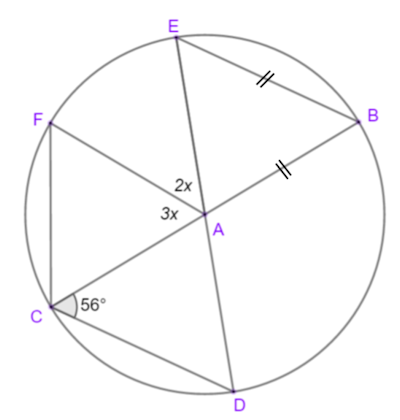
Calculate the value of \(x\).
2. | GCSE Higher |
The points B, C, D and E lie on the circle with centre at A.
FBE is a straight line.
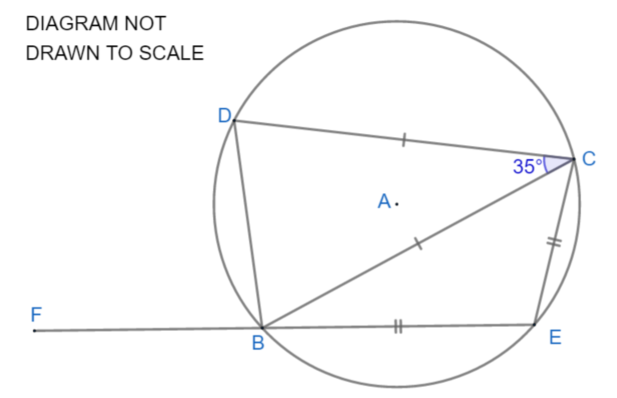
DC = BC
BE = EC
Angle DCB is 35°
Find angle DBF.
You must give a reason for each stage of your working.
3. | GCSE Higher |
B, C, D and E are points on the circumference of a circle, centre O.
BD is a diameter of the circle and the diagram is not drawn to scale.
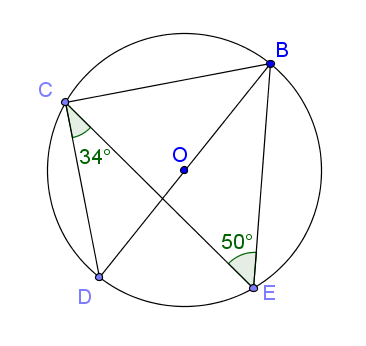
(a) Find the size of angle DBE and give a reason for your answer.
(b) Find the size of angle DBC and give a reason for your answer.
4. | GCSE Higher |
Points B, D, G and F lie on a circle.
ABC is the tangent to the circle at B.
CDE is the tangent to the circle at D.
Find the size of angle CDG.
You must give a reason for each stage of your working.
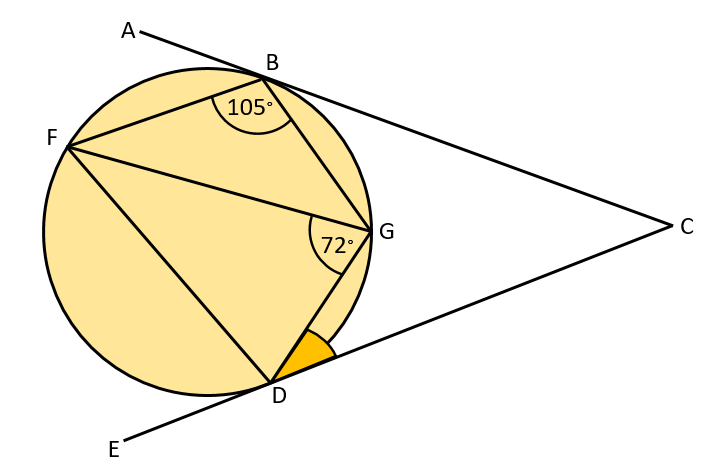
5. | IGCSE Extended |
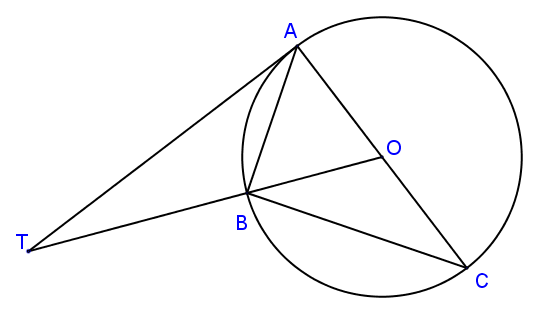
In the diagram above, not drawn to scale, A, B and C are points on a circle, centre O. TA is a tangent to the circle at A and OBT is a straight line. AC is a diameter and angle OTA = 28°.
Calculate
(a) angle AOT
(b) angle ACB
(c) angle ABT
6. | GCSE Higher |
(a) Find \(x\), the size of angle ABC if B, C and D are all points on the circle to which AB is a tangent. The diagram is not drawn to scale.
(b) Give a reason for your answer
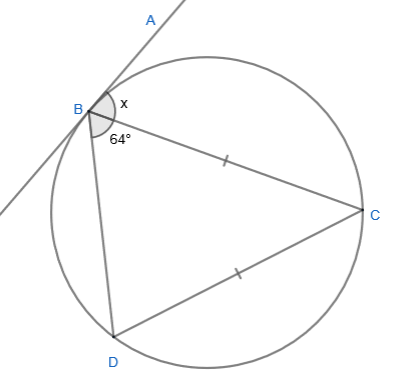
7. | GCSE Higher |
The diagram shows a circle with its centre at the origin.
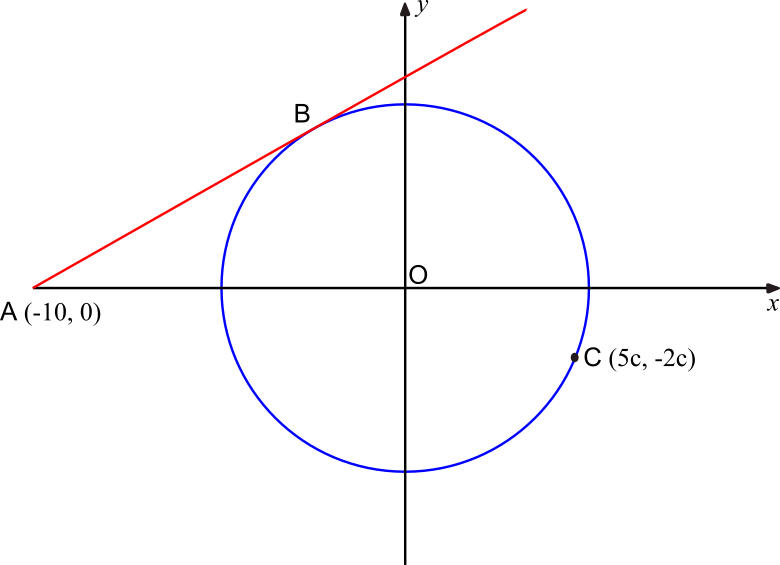
The red line AB is a tangent to the circle at the point B.
Angle OAB is 30°.
Point A has coordinates \((-10, 0)\)
Point C has coordinates \((5c, -2c)\)
Find the value of \(c\) giving your answer correct to three significant figures and showing all of your working.
8. | GCSE Higher |
The diagram, not drawn to scale, shows chords joining points on the circumference of a circle. Prove that triangle ADE is similar to triangle BCE.
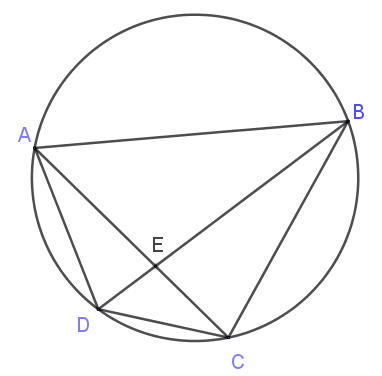
9. | IGCSE Extended |
The diagrams are not drawn to scale
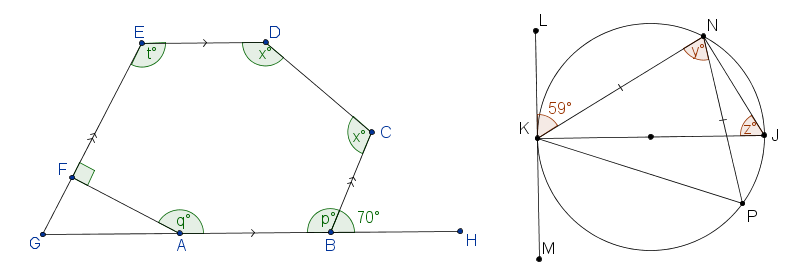
|
ABCDEF is a hexagon with AB parallel to ED and BC parallel to FE. GFE and GABH are straight lines. Angle CBH = 70o and angle EFA = 90o. Calculate the values of: (a) \(p\); (b) \(q\); (c) \(t\); (d) \(x\). |
K, P, J and N are points on a circle and KN = NP. KJ is a diameter and LKM is the tangent to the circle at K. Angle LKN = 59o. Find the values of: (e) \(y\); (f) \(z\). |
If you would like space on the right of the question to write out the solution try this Thinning Feature. It will collapse the text into the left half of your screen but large diagrams will remain unchanged.
The exam-style questions appearing on this site are based on those set in previous examinations (or sample assessment papers for future examinations) by the major examination boards. The wording, diagrams and figures used in these questions have been changed from the originals so that students can have fresh, relevant problem solving practice even if they have previously worked through the related exam paper.
The solutions to the questions on this website are only available to those who have a Transum Subscription.
Exam-Style Questions Main Page
To search the entire Transum website use the search box in the grey area below.
Do you have any comments about these exam-style questions? It is always useful to receive feedback and helps make this free resource even more useful for those learning Mathematics anywhere in the world. Click here to enter your comments.